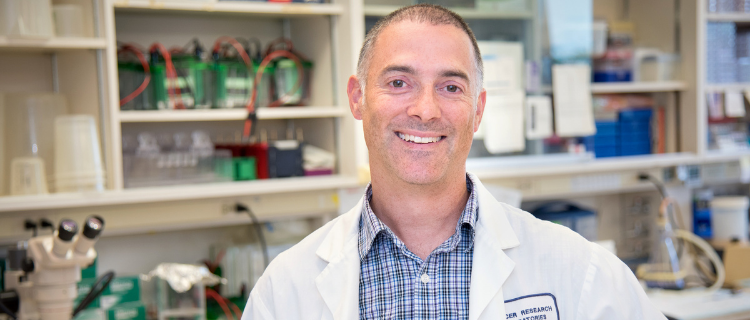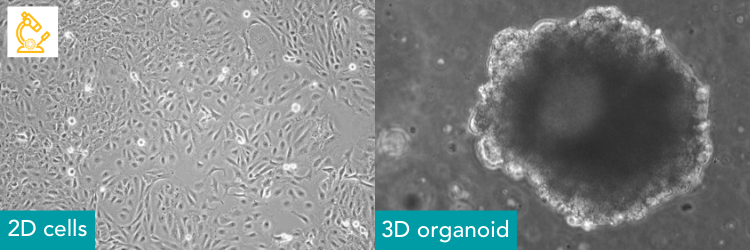London, Ontario–based translational oncology scientist Dr. Trevor Shepherd dedicates his career to breaking new ground in ovarian cancer research. He’s currently developing three-dimensional (3D) models of cancer cells, using tissues donated by women with ovarian cancer. In technical terms, these are called patient-derived organoids, essentially miniature tumours that are grown in a lab. Importantly, they preserve the characteristics of actual tumours, and respond just as a tumour would when changes to its surroundings are introduced.

More and more researchers, across Canada and worldwide, are turning to these new models, and so together with Dr. Nikolina Radulovich from the Princess Margaret Living Biobank in Toronto, Dr. Shepherd is developing a collection of them to support ovarian cancer research.
“For well over a decade now, I’ve been working to develop an experimental system that we can use in a research lab to test new treatments that target ovarian cancer,” he explains. “What we’re doing now is taking this work to the next level, so that these 3D models can be dispatched to speed research across the country.”
What this means, in short, is that scientists can test more novel treatments and therapeutics, in new ways. “We’ll have an experimental platform to test new treatments in real-time, and we’ll be able to do it on a large scale,” says Dr. Shepherd. “So we can test many different drugs, many different concentrations, maybe even combinations.”
The goal of Dr. Shepherd’s and Dr. Radulovich’s project is to produce 25 models, each with unique characteristics such as stage and subtype, to help Canadian scientists study the biology of ovarian cancer and how different types of tumours react to different treatments. The project is on track to meet its target – even despite the COVID-19 pandemic.

In the world of research, moving to 3D models like these represents a significant leap forward because it provides laboratory specimens that act like actual cancer cells found in women with ovarian cancer. The alternative is what’s known as cell lines – but, as Dr. Shepherd explains, these have limitations. “Cell lines use materials that may have been taken and cultured 10, 15, 20 years ago, so they may have undergone changes that affect their biology.”
In addition to their research benefits, this new approach has the potential to support personalized treatment strategies. “For instance, these models could be used to test the effects of different therapeutic options on tissue that’s directly from a woman in treatment,” says Dr. Shepherd. “If maintenance therapy is needed or in case of recurrence, we could potentially have our strategy planned, because we’ve done this analysis using tissue from that person’s tumour.”
It’s anticipated that models produced by this project will make an impact relatively quickly. “We think we can rapidly apply these models, within the next year or two,” says Dr. Shepherd. “Results from this project will be shared across the whole ovarian cancer research community, so that we can collectively work on identifying new treatments for women with ovarian cancer.”
Developing innovative research models like these is a critical part of Ovarian Cancer Canada’s OvCAN initiative, which funds Dr. Shepherd and Dr. Radulovich’s project, and many others.
Ovarian Cancer Canada’s OvCAN research initiative is the result of advocacy efforts that successfully culminated in a historic $10 million investment in ovarian cancer research by the Government of Canada. This five-year funding has since grown with the governments of Nova Scotia and Saskatchewan each committing an additional $1 million, and the private sector contributing a further $2 million.
The views expressed herein do not necessarily represent the views of Health Canada.


